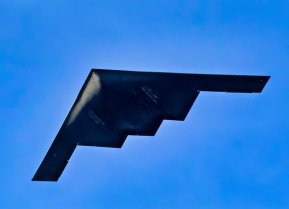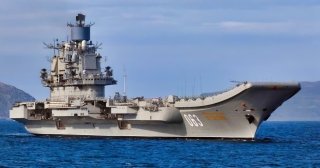The Russian Navy's Aircraft Carrier Nightmare Just Won't Stop
The Russian Navy's aspirations to expand its fleet with aircraft carriers face significant challenges amidst the ongoing conflict in Ukraine and the impact of Western sanctions. The Admiral Kuznetsov, Russia's sole aircraft carrier, has been sidelined due to persistent maintenance issues and is not expected to return to service soon, especially not near the warzone.
Summary: The Russian Navy's aspirations to expand its fleet with aircraft carriers face significant challenges amidst the ongoing conflict in Ukraine and the impact of Western sanctions. The Admiral Kuznetsov, Russia's sole aircraft carrier, has been sidelined due to persistent maintenance issues and is not expected to return to service soon, especially not near the warzone. In addition to the Kuznetsov, Russia is developing two Project 23900 Ivan Rogov-class amphibious assault ships, which could potentially operate as light aircraft carriers if equipped with STOVL fighter jets. However, the timeline for their completion is uncertain, compounded by the broader struggles of the Russian defense industry in meeting deadlines and producing quality military assets. These developments occur against a backdrop of significant naval losses for Russia in the Ukraine conflict, highlighting the challenges Moscow faces in maintaining and expanding its naval power.
Russia's Naval Ambitions: The Struggle to Expand Its Aircraft Carrier Fleet
Aircraft carriers signify the power of a military. Expensive to build and operate, aircraft carriers can project power like no other conventional weapon system.
As such, every country that seeks to be called a superpower aspires to a fleet of flattops.
Russia only has one—at least on paper—compared to the 11 of the United States. Although the Russian Navy has been taking heavy losses in the war in Ukraine, it is building two other warships that could qualify as aircraft carriers.
The Admiral Kuznetsov
The Admiral Kuznetsov is a combination of a light aircraft carrier and a guided-missile cruiser. As an aircraft carrier, it can carry up to 24 fighter jets and 12 helicopters; in its role as a heavy cruiser, the warship packs 12 P-700 anti-ship cruise missiles and almost 200 3K95 “Kinzhal” surface-to-air missiles.
However, the warship has been plagued by maintenance issues and has been out of service for urgent repairs since 2017.
Although the Russian Ministry of Defense suggests it will be ready sometime in 2024, that estimate is likely to be off. And even if the light aircraft carrier were ready, the Russian Navy would likely protect it and not deploy it close to the warzone.
The Russian Navy is suffering in Ukraine even though the war is mainly fought on land. Since February 24, 2022, the Russian Navy has lost over ten surface warships, submarines, and support vessels to Ukrainian fire.
But besides the Admiral Kuznetsov, the Russian Navy is also working on two other warships that could serve as light aircraft carriers.
Project 23900 Ivan Rogov
Following France’s cancellation of the delivery of two Mistral-class amphibious assault ships, the Russian military started working on its own design. The Project 23900 Ivan Rogov-class amphibious assault ship will be able to carry around 20 attack and transport helicopters.
To be sure, these aren’t aircraft carriers, but they could double down as light carriers if the Russian military could equip them with the right aircraft—that is Short Take-off, Vertical Landing (STOVL) fighter jets like the AV-8B Harrier and the F-35B Lighting II. Without these specialized aircraft that can take off and land like helicopters, the Project 23900 warships wouldn’t count as aircraft carriers.
The Russian Navy laid down two warships of the type in 2020 with the intent to commission them before the end of the decade. However, the Russian Navy’s timeline will surely be affected by the ongoing war in Ukraine and the Western sanctions that have seriously affected the Russian defense and aerospace industries.
But even if there weren’t a major war going on, the timeline would likely be off. The Russian defense industry is notorious for missing deadlines or delivering subpar products. Take for example, the Su-57 Felon fifth-generation stealth fighter jets. The aircraft has been in production for several years and the Russian defense industry has managed to produce only a handful of prototypes that the Russian military was forced to push in operational service.
The Project 23900 Ivan Rogov amphibious assault ships will likely encounter similar delays.
About the Author
Stavros Atlamazoglou is a seasoned defense journalist specializing in special operations and a Hellenic Army veteran (national service with the 575th Marine Battalion and Army HQ). He holds a BA from Johns Hopkins University and an MA from the Johns Hopkins School of Advanced International Studies (SAIS). His work has been featured in Business Insider, Sandboxx, and SOFREP. Email the author: [email protected].
Image Credit: Russian State Media/Public Domain.


